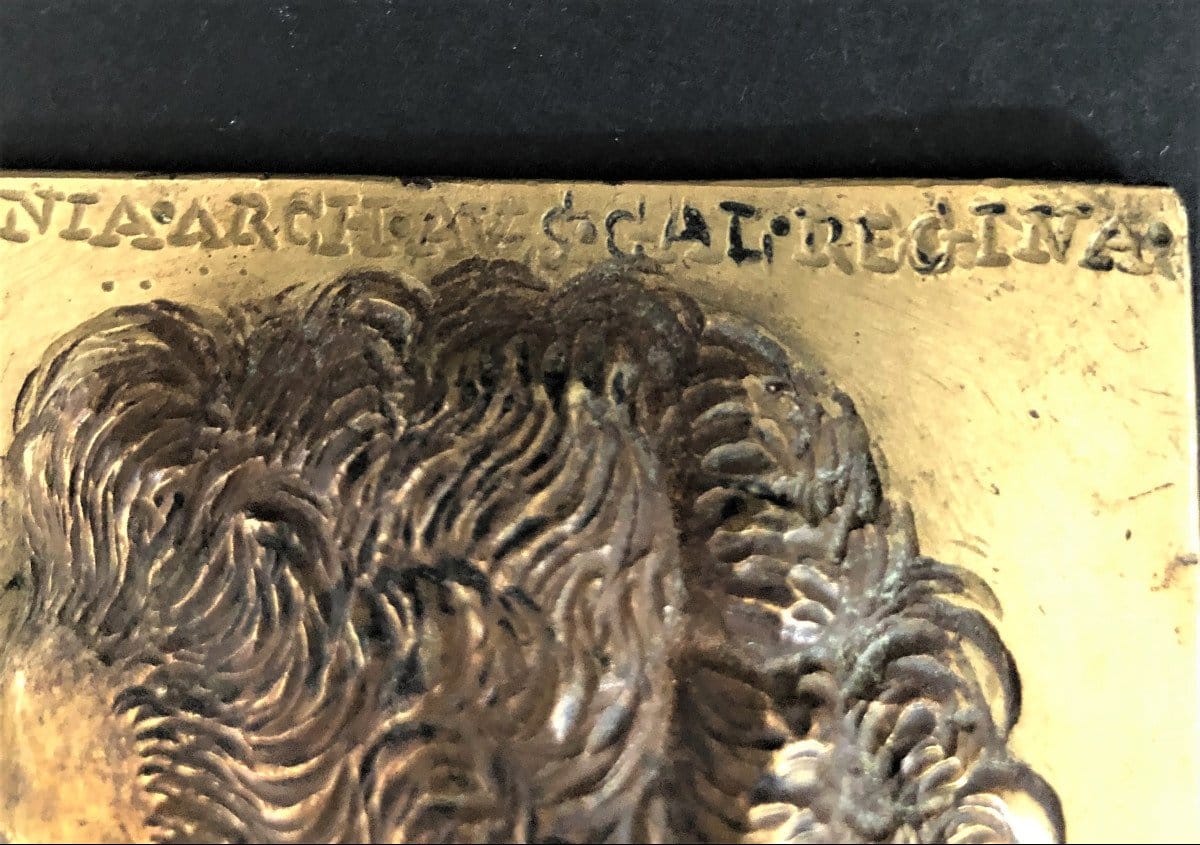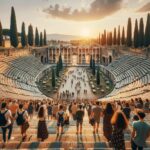Antiquità. The very word evokes images of sun-drenched ruins, intricate mosaics, and the whispers of civilizations long past. More than just “old things,” antiquità–the Italian word for antiquity–offers a tangible connection to the art, architecture, and daily lives of those who came before us, primarily from ancient Greece, Rome, and Egypt. From the smallest pottery shard to the grandest Colosseum, these remnants serve as portals to understanding our shared human heritage.
Whispers from the Past: Deciphering Ancient Treasures
Stepping into the world of antiquità is like stepping back in time. A simple Roman coin can whisper stories of emperors and empires, while a Greek vase, painted with intricate scenes, can reveal myths and daily rituals. These artifacts are not merely objects; they are fragments of lives lived centuries ago, offering glimpses into lost worlds and forgotten customs. They offer a profound connection to the past, enriching our understanding of human history and our place within its vast tapestry.
The Enduring Allure: Why We’re Captivated by Antiquità
The fascination with antiquità endures for a multitude of reasons. Holding a piece of ancient pottery, for instance, bridges the chasm of time, transforming history from abstract dates into a tangible experience. It allows us to connect with the individuals who crafted and used these objects, fostering a sense of shared humanity across millennia. The sheer aesthetic brilliance of these artifacts, from the graceful lines of a Greek sculpture to the vibrant hues of an Egyptian tomb painting, evokes a sense of awe and wonder. The craftsmanship, often achieved with limited technology, speaks to the ingenuity and artistry of ancient cultures.
Furthermore, antiquità presents a captivating intellectual puzzle. Each artifact, inscription, and archaeological discovery contributes a piece to the larger narrative of human civilization. Ongoing research continually reshapes our understanding, reminding us that our grasp of the past is always evolving. For example, recent studies of ancient pigments are allowing us to recreate the original, vibrant colors of statues and temples, offering a more authentic vision of their past glory. This ongoing process of discovery and reinterpretation keeps the field of antiquità dynamic and endlessly fascinating.
Beyond its aesthetic and historical value, antiquità carries significant cultural weight. The legacies of ancient Greece, Rome, and Egypt resonate in our modern world, influencing our art, architecture, political systems, and even our storytelling. Exploring these ancient roots can foster a stronger sense of cultural identity and an appreciation for the interconnectedness of human history. For instance, the Colosseum stands as a symbol of Roman engineering and a testament to the enduring power of ancient structures.
Finally, while not the primary driver for most enthusiasts, the investment potential of antiquità cannot be ignored. Rare and authentic pieces can appreciate significantly over time, attracting collectors and investors. However, this aspect of antiquità also raises important ethical considerations, such as the problem of looting and the importance of responsible collecting practices.
A Deeper Dive into the Fascination:
| Aspect | Description |
|---|---|
| Connection to the Past | Antiquità provides a tangible link to our ancestors and their world. |
| Aesthetic Appeal | The beauty and artistry of ancient objects evoke a sense of wonder and admiration. |
| Intellectual Stimulation | Studying ancient cultures offers insights into human thought, belief systems, and societal structures. |
| Cultural Significance | Antiquità deepens our understanding of cultural identity and historical influence. |
| Investment Opportunity | Rare artifacts can hold significant financial value. |
A Legacy in Art, Design, and Culture: The Enduring Influence of Antiquità
The reach of antiquità extends far beyond museums and archaeological sites. Its influence permeates our modern world, shaping artistic expression, architectural design, and even the narratives we tell. The echoes of ancient Greece and Rome, in particular, resonate throughout our cultural landscape.
Echoes of the Past: Inspiring Modern Artists
The spirits of ancient masters seem to inhabit contemporary art studios. Modern artists, such as Pablo Picasso, found inspiration in the powerful simplicity of ancient sculptures, incorporating elements of classical form and composition into their own groundbreaking work. The rediscovery of Pompeii and Herculaneum in the 18th century fueled the Neoclassical movement, a resurgence of interest in Greco-Roman aesthetics. Artists like Jacques-Louis David sought to capture the elegance and grandeur of antiquity, revitalizing classical themes and artistic techniques. To understand the profound influence of antiquity on art, one need only look at the bacchanal painting, a vivid depiction of hedonistic revelry inspired by ancient Roman traditions, or consider the energetic celebration of the Bacchus Olympics, showcasing the enduring appeal of ancient mythology.
Designing with the Ghosts of Antiquity
The imprint of antiquità is etched into the very structures we inhabit. Architectural luminaries like Andrea Palladio looked to Roman architecture for inspiration, incorporating classical elements such as columns, pediments, and arches into their designs. These features became hallmarks of Western architecture, influencing everything from grand public buildings like the US Capitol Building to the design of private homes. Even everyday objects, from furniture to home décor, often bear the subtle mark of ancient aesthetics, reflecting the enduring appeal of classical forms and patterns.
Ancient Myths, Modern Stories
The narratives of ancient Greece and Rome continue to shape our storytelling. Myths and legends, from the trials of Hercules to the odyssey of Odysseus, are retold and reinterpreted in literature, film, and theater. These timeless stories act as cultural bridges, connecting us with the beliefs, values, and aspirations of past civilizations.
Unveiling the Future of Antiquità: Ongoing Research and Discoveries
While the influence of antiquità on modern culture is undeniable, ongoing research continues to reveal new connections and deepen our understanding. Scholars are using cutting-edge technologies like 3D scanning to examine artifacts in unprecedented detail, uncovering hidden inscriptions and revealing new insights into ancient techniques. The study of antiquità is a dynamic field, constantly evolving as new discoveries are made and new interpretations emerge. This continuous process reminds us that there is always more to learn about the ancient world and its enduring legacy.
Preserving the Past: Ethical Considerations and Technological Advancements
The world of antiquità faces unique challenges. Preserving these fragile remnants of history requires constant vigilance against environmental damage, accidental degradation, and the devastating effects of looting. Ethical considerations surrounding the ownership, acquisition, and trade of antiquities are paramount. The provenance of an object – its history of ownership – is crucial in determining its authenticity and ensuring that it has been acquired legally and ethically. Museums and archaeologists grapple with complex questions about repatriation, the return of artifacts to their countries of origin.
Technological advancements offer exciting new possibilities for preserving and sharing antiquità. 3D scanning and virtual reality allow us to experience these treasures without putting them at risk of physical damage. These technologies also create opportunities for virtual museum exhibits, making antiquità accessible to a wider audience.
The study of antiquità is not just about uncovering the past; it’s about understanding ourselves and our place in the grand narrative of human history. It’s a journey of ongoing discovery, filled with wonder, intellectual stimulation, and a deep appreciation for the rich tapestry of human experience. As new discoveries continue to emerge and our understanding of the past evolves, the allure of antiquità will undoubtedly continue to captivate and inspire generations to come.
- Unlock Elemental 2 Secrets: Actionable Insights Now - April 2, 2025
- Lot’s Wife’s Name: Unveiling the Mystery of Sodom’s Fall - April 2, 2025
- Photocell Sensors: A Complete Guide for Selection and Implementation - April 2, 2025
















